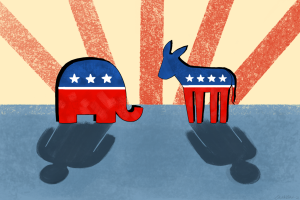The problem with diversity for diversity’s sake
April 3, 2023
With its stunning visuals, gut-wrenching dialogue and magnetic performances, it’s no surprise that “Everything Everywhere All at Once” swept this Oscar’s season.
So why do people keep tying the movie’s wins to identity politics?
As we become more conscious about bigotry in the media, diversity and representation are increasingly emphasized. This strive for a wider reach — while a noble pursuit — may inadvertently incentivize creators who shoehorn half-baked narratives into their work. When the motivation behind inclusion is perverse, good storytelling can be undermined and marginalized communities may be overshadowed.
Though this is not a UT-specific problem, it is an industry-wide concern that students should recognize. As part of a nationally-ranked program, UT’s current film students must consider the nuances and implications of representation as they are the next generation of screenwriters and directors.
Radio-television-film sophomore James Garcia warned about the dangers of forced narratives in filmmaking.
“It is kind of dangerous to see that common goal and that very important idea (of representation used) as a quota — for us to see it as something that needs to be a checkmark,” Garcia said. “I think that’s how you tend to see a lot of these gross depictions of people of different sexualities or different races.”
Often, writers charged with developing minority plots feel the need to acknowledge the institutional burdens — such as racism and homophobia — of these roles. However, marginalized groups are more than the pain they have experienced. Nor should they be responsible for sparking conversations about oppression every time they’re hired for an acting job in the same way that their white, cisgender or heterosexual counterparts are not expected to do.
Diversity should come organically from bolstering minority groups to create and participate in artistic endeavors of their choosing. It cannot, however, be leveraged to pressure others into speaking out against bigotry they’ve faced.
The reason that representation in the media matters is to allow minorities an equal opportunity to showcase their talent. Rather than emphasizing marginalization in stories where such attempts may be seen as profit-motivated, directors should hire underrepresented individuals for parts where the character’s race is not pivotal to the plot. Non-traditional and color-conscious casting should coexist without compromising the other. Examples of non-traditional casting include Halle Bailey’s Ariel, Yara Shahidi’s recently-announced Tinker Bell and the Sharma family in season two of “Bridgerton.”
By encouraging future UT directors to hire minorities for roles that do not center around their race, the cast and crew are properly honored just like any other critically acclaimed story. Furthermore, they are spared the bombardment by potentially superficial incentives.
Leonardo Garcia, a sociology and race, indigeneity and migration sophomore, explained that they felt some pressure did exist for the Academy to vote for “Everything Everywhere All at Once” because of its predominantly minority cast.
“We get to this year’s Oscars, and I definitely do think it’s a mix of both (merit and politics) because I am sure that there was someone in the Academy that was (perversely) compelled to vote in favor of (‘Everything, Everywhere All at Once’),” Garcia said. “I’m also sure that there was another voter that really identified (with) or really loved the story that was portrayed and gave that vote to the movie because they deemed it worthy of the awards that it was nominated (for).”
Creating a culture where artists feel pressure to feign diverse narratives in their art clouds merit — especially when minorities are critically acclaimed for their stories. Inclusion should not be a casting factor when used to exploit minority narratives for diversity’s sake.
Hosseini is an international relations freshman from Sugar Land, Texas.
















